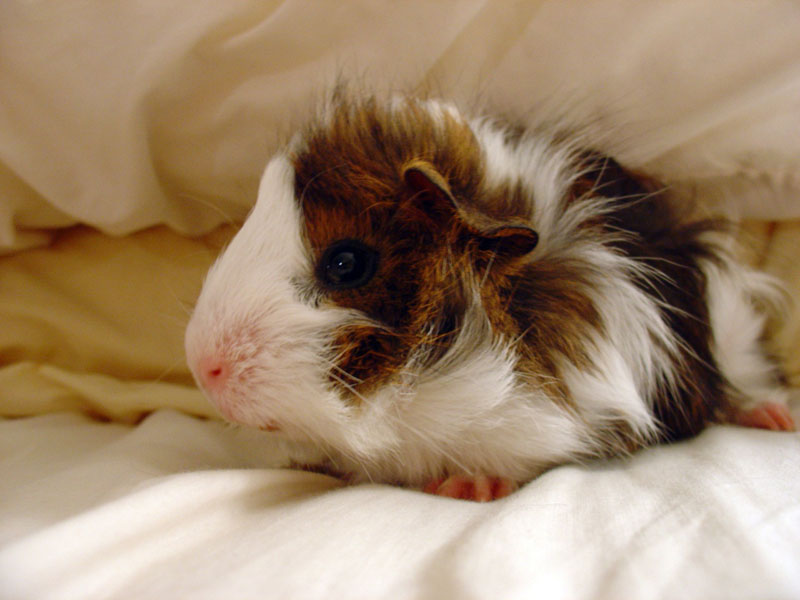Peru 1
page 1 | page 2 | page 3 | page 4 | page 5
Lima (5/4/07 - 8/4/07)
The wealthy and affluent capital of Peru and once the capital of Spanish South America (all of South America except Brazil). A very large earthquake in 1746 put an end to all that. I spent my time in Lima just chilling out and not doing much.

Arriving in Lima after Quito wasn't much of a shock. Although it was one of the most expensive two-hour flights I have ever been on (it was the day before good Friday), it was relatively uneventful. I stayed, for the whole time, in a place by the sea in an upmarket area called 'Miraflores'. I win the sloth award for chilling out because I did not venture out of this area until I had to leave for Cusco. I ventured out of my hostel to go to a supermarket and to watch a movie (300... not very good, but just the sort of I-dont-want-to-think movie experience I was after).
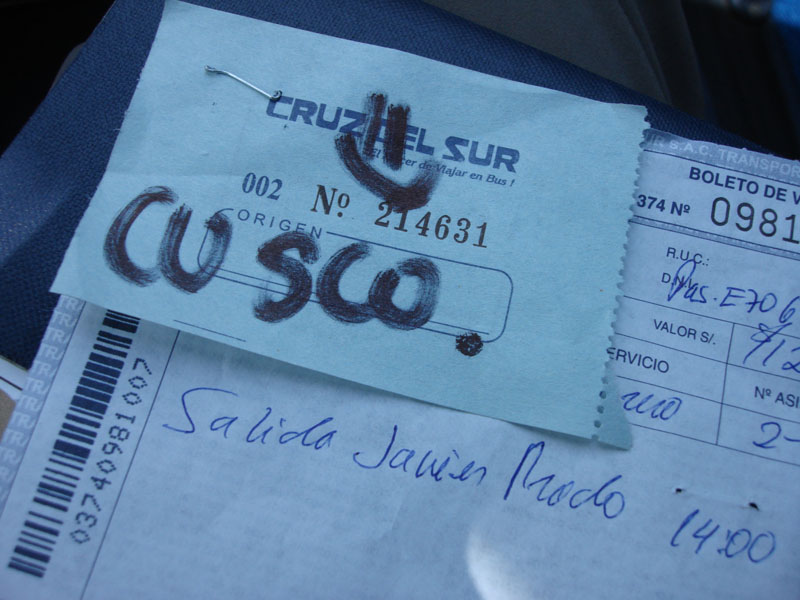
The whole reason I was in Peru, of course, was to see Machu Picchu. To see Machu Picchu, one must first go to Cusco, then hike a bit (or take a train) to Machu Picchu itself. Here is my bus ticket... the bus ride was 21 hours...
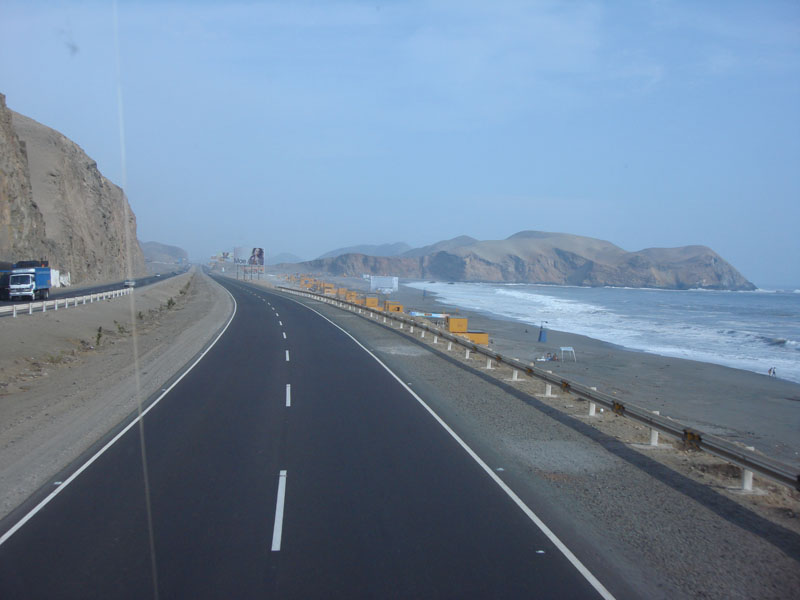
Outbound from Lima on the Pan-American highway. The original idea was to build a highway which stretched from somewhere in Alaska right to the southernmost tip of Chile. It almost worked. The only sections not covered are around the Panama-Columbia border, originally because of engineering difficulties, but now because of political ones. The section which passes through Peru is in a reasonably good state of repair.
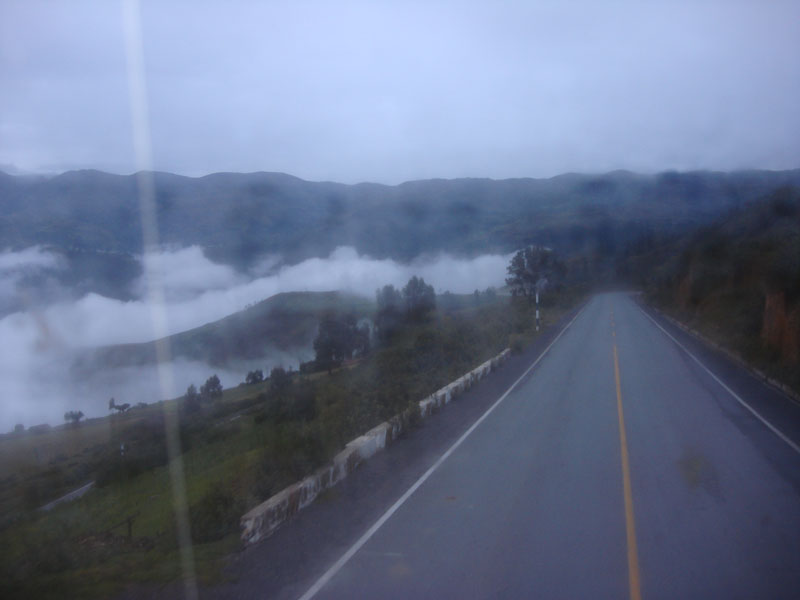
After passing through Nazca, famous for huge drawings in its landscape which are only visible from the air, we journeyed through some very twisty mountain roads before finally getting to Cusco... where the altitude quite literally takes your breath away. You'll notice that the window is quite fogged, this is because, at the time, the bus was serving a dual function - as a vehicle for humans and as a fridge. Lucky for us, for it meant that we were very fresh when we arrived in Cusco.
Cusco (9/4/07 - 18/4/07)
Cusco was the capital of the Incan Empire for about 500 years. Over 3300 metres above sea level, it takes a bit of getting used to.
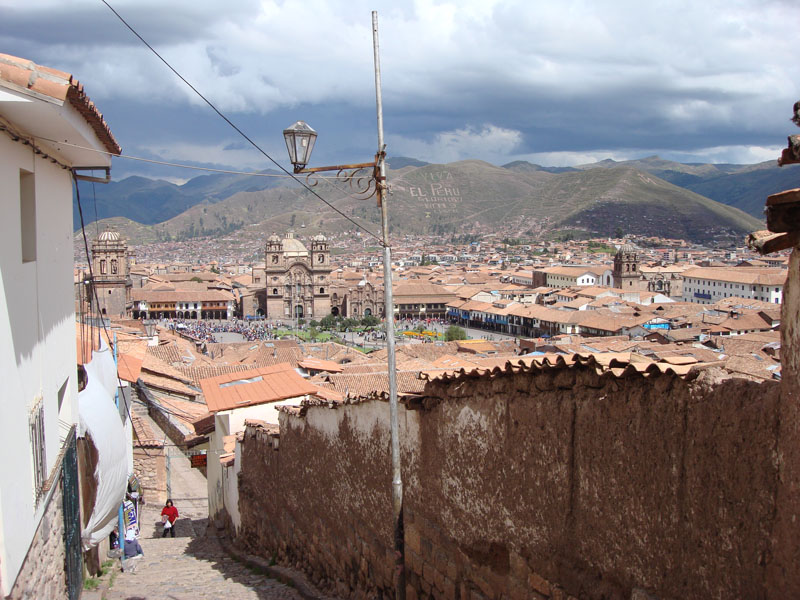
Looking down an alleyway into the Plaza de Armas, the centre of Cusco.
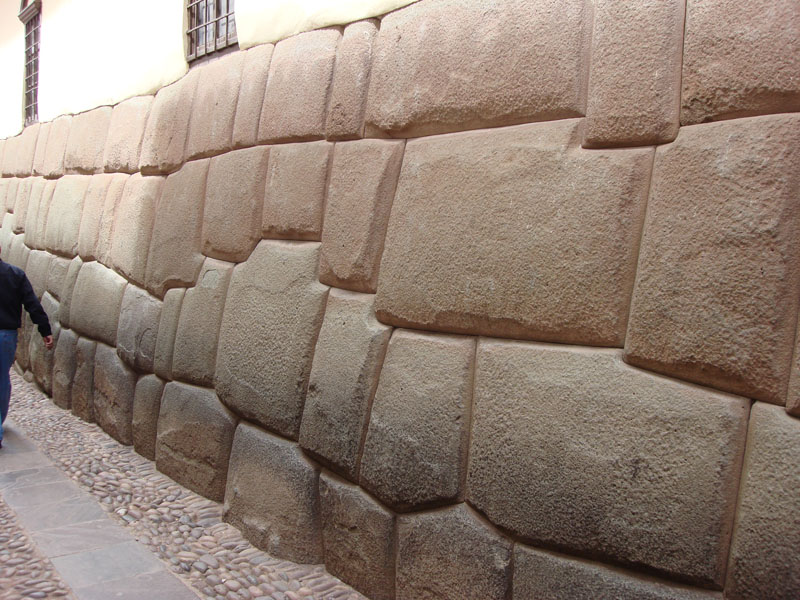
Throughout the city, Inca stonework is found. The stones are very large and very heavy, they seem to fit together perfectly.
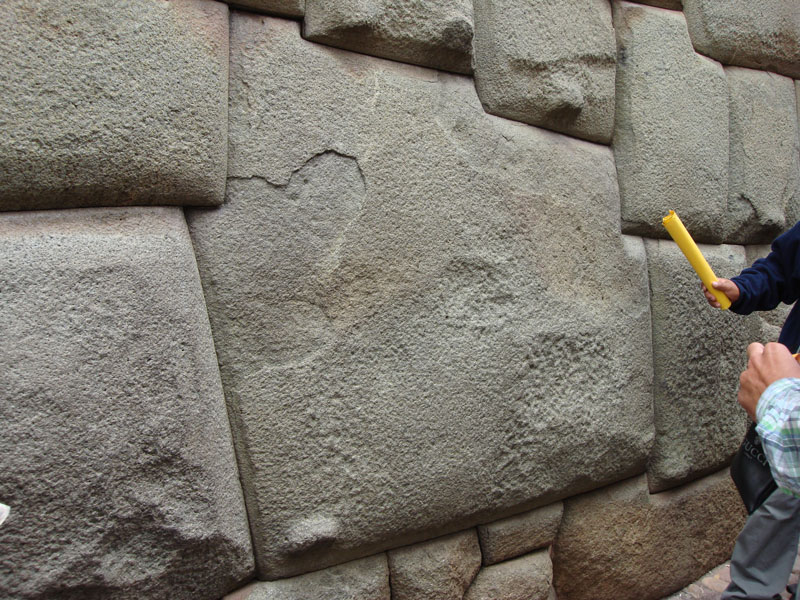
This is the "12-sided stone", so named because it had 12 sides. You can see little hand-holds on all of the stones which we believed to be used to help move the stones into place.
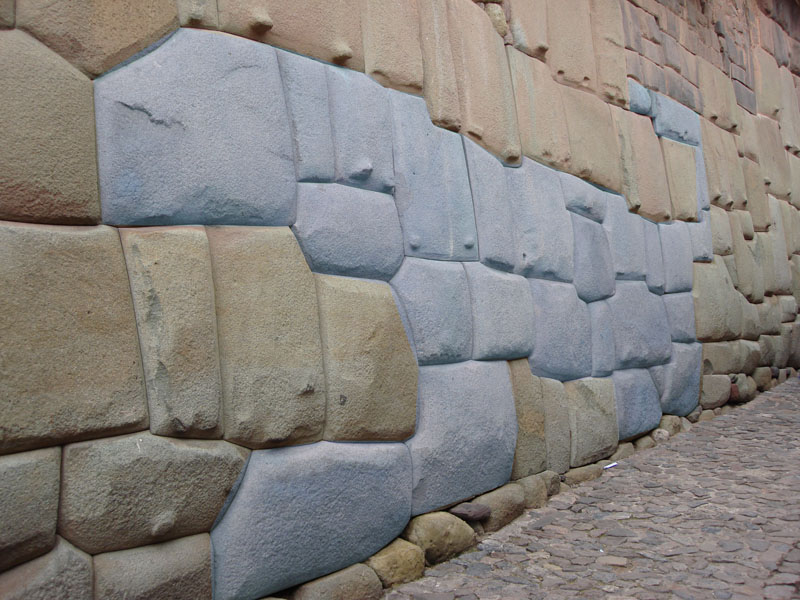
Along one of the walls is the famous "puma". I have highlighted the puma in green, the actual rocks aren't this colour.
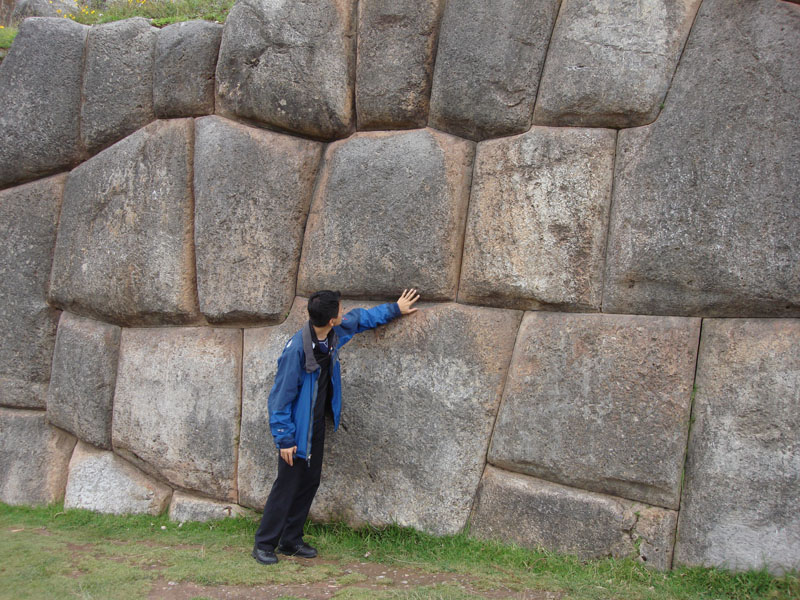
Just a little way north of Cusco is the site "sexy woman"... well, it is actually called "Saqsaywaman". When I arrived, I was a bit deflated that the site wasn't actually, in any way shape or form, a sexy woman. Instead, it was a large complex of walls made of gigantic stones which fit together quite perfectly and formed a complex which is believed to have been used as some sort of religious centre.
It is difficult to get a feel for the scale of the site without a panoramic shot... so here it is (click the photo for an enlargement (if only enlargement were this easy)). Yes, those stones are VERY big. They were obviously put there by aliens.
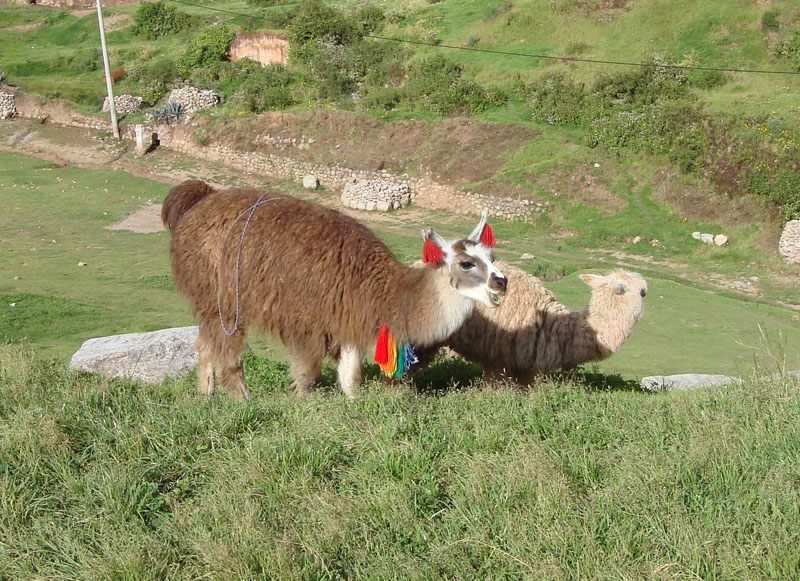
Alpacas. Camel-like creatures with fur which is very good for making warm clothing out of.
There are lots of guinea pigs on this continent. (click on the picture)
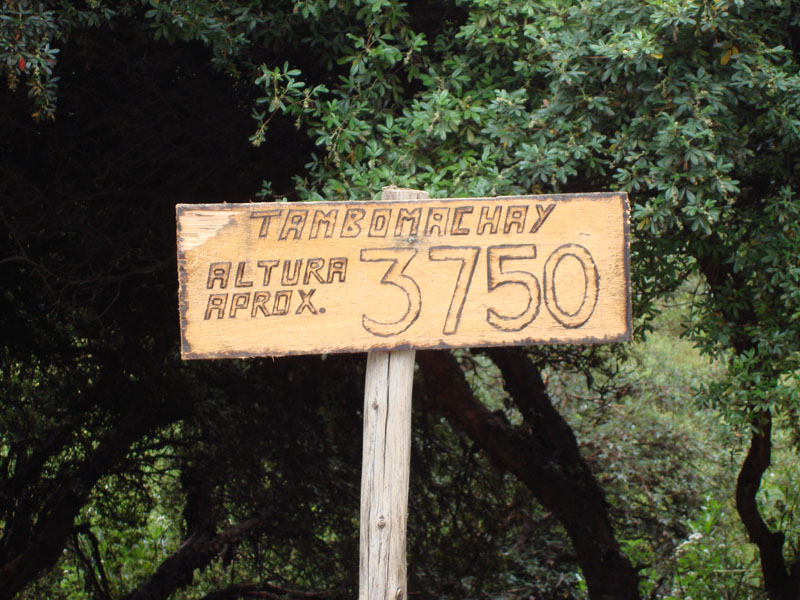
The next day, we continued to visit Inca ruins in the surroundings of Cusco.
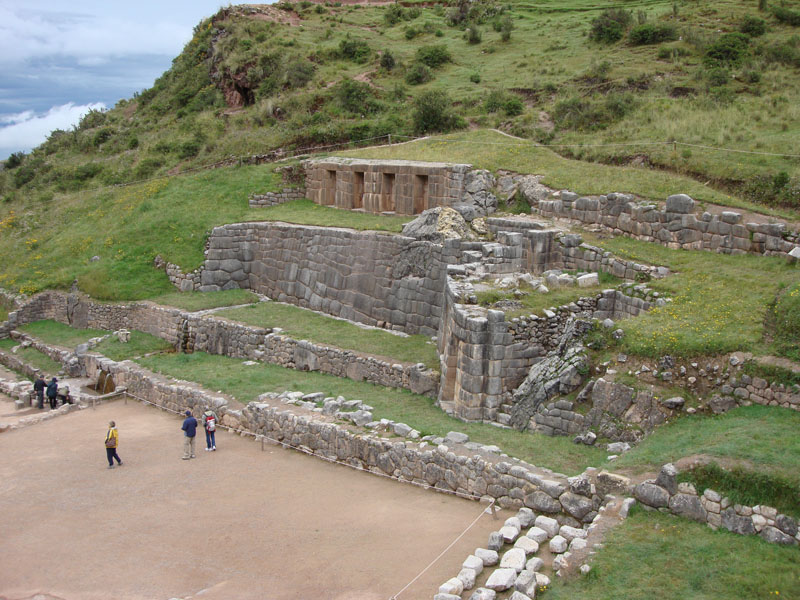
Tambomachay, apart from being a very impressive collection of stonework, also features some water outlets of some sort.
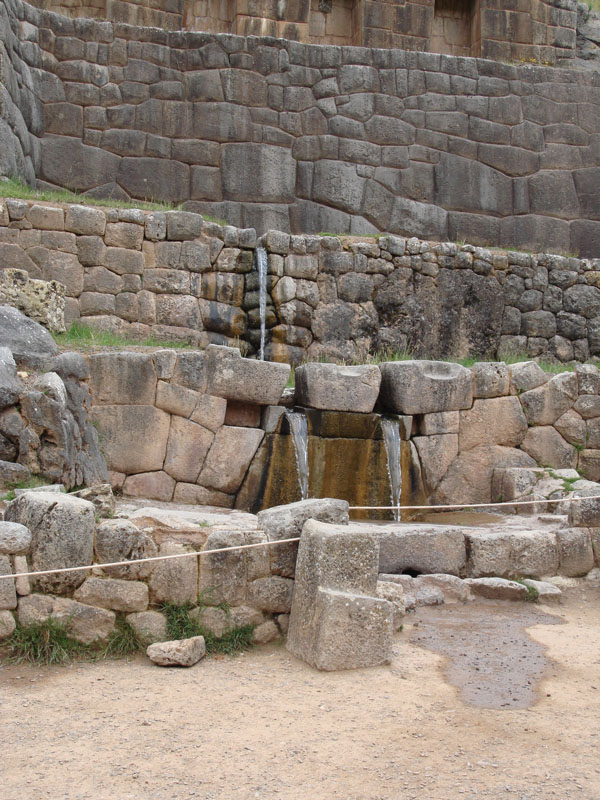
The source of this water is still a mystery. Perhaps Melbourne could use some mysterious Inca plumbing to help with its water shortages.
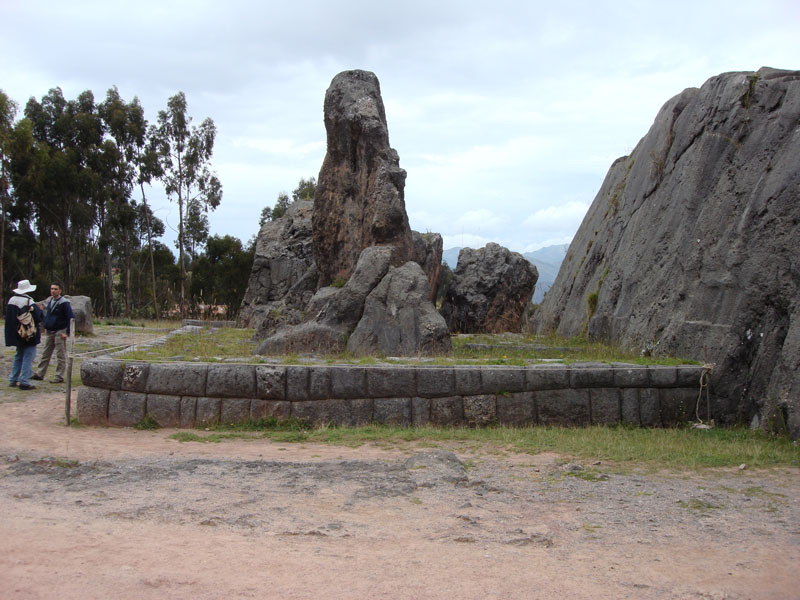
Q'enqo - a site which features a very large rock.
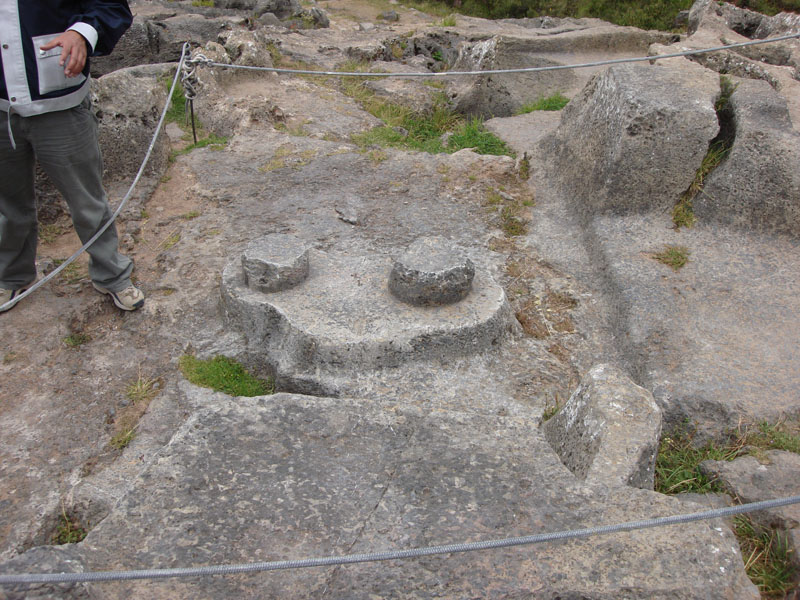
An early attempt at a 9 volt battery.
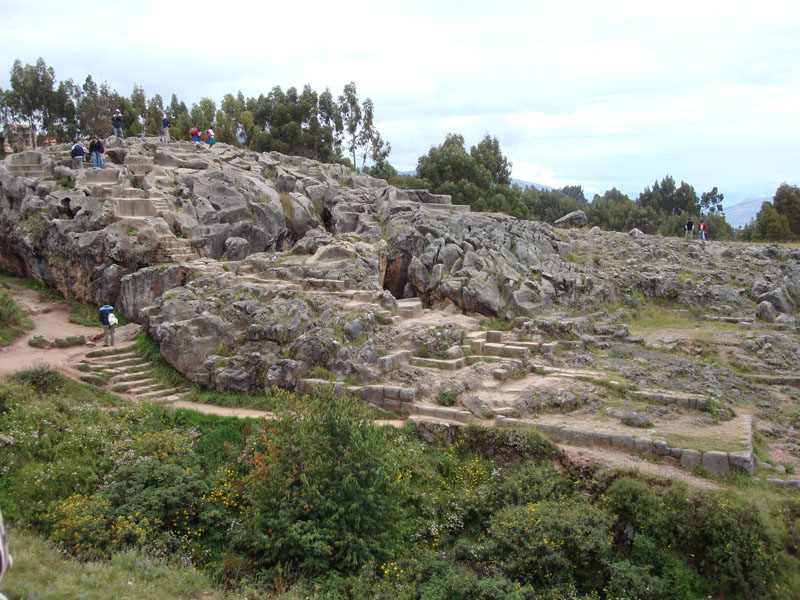
The site gives a little insight into Inca stoneworking techniques. The terrain at the top of the rocky outcrop vaguely resembles the "Clapham Junction" rock formations on Malta.
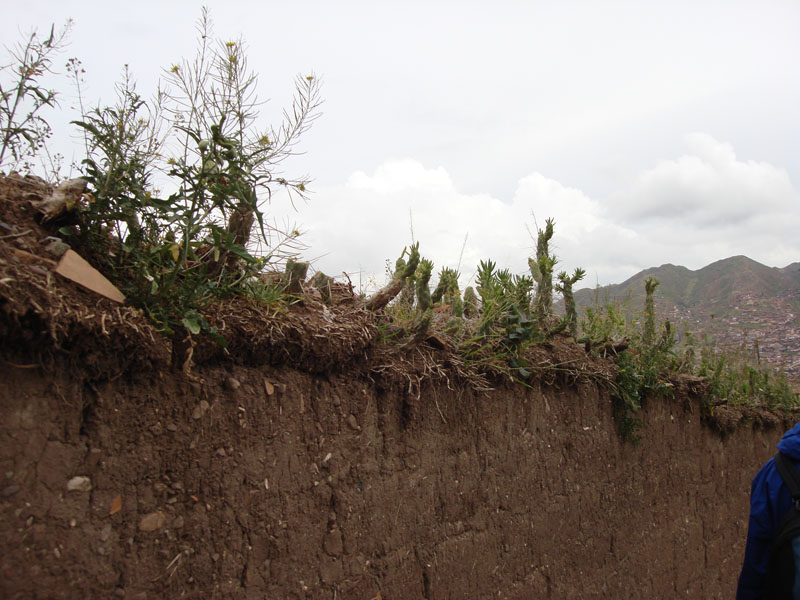
Who needs barbed wire when you can grow cactus on top of your walls? This probably also serves the purpose of delaying erosion.
Trail through Salkantay pass to Machu Picchu
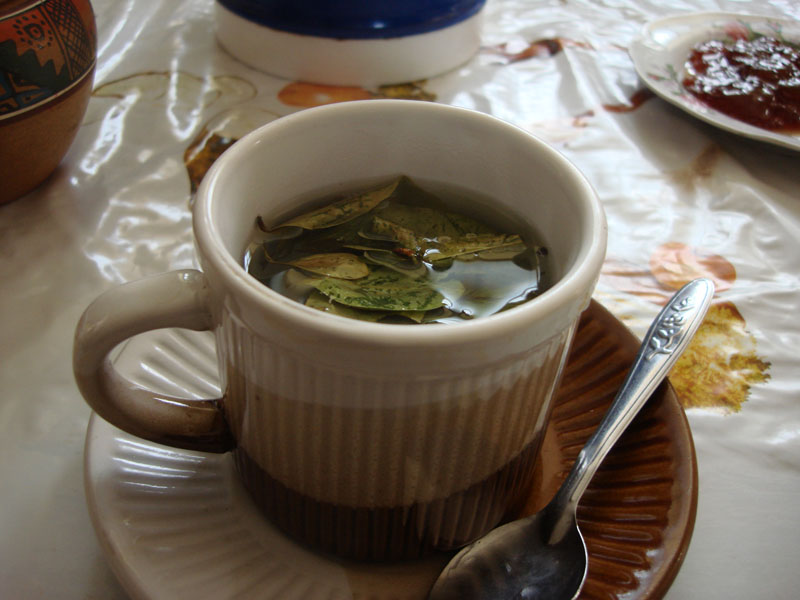
Arriving in Cusco a little too late to book a spot on the "standard" Inca trail, we opted for a popular alternative which also goes for 5 days and 4 nights which begins in a small town called Mollepata, goes through Salkantay pass (Salkantay is a big mountain) through to Santa Theresa before finally arriving at Machu Picchu. After picking up all the trekkers in our group (an odyssey which began at 4:30am) we made our way to Mollepata where we had breakfast and drank some tea with Cocoa Leaves... for the altitude.
page 1 | page 2 | page 3 | page 4 | page 5

